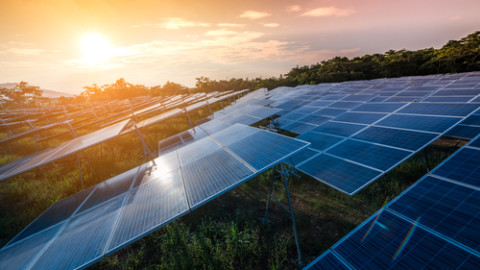A new $768 million solar farm for the Northern Tablelands has been approved with conditions by the Independent Planning Commission of NSW.
The applicant, UPC Renewables Australia, sought planning approval for the 720MW New England Solar Farm on 3,362 hectares of agricultural land, 6km east of Uralla.
The solar farm would comprise more than 2.4 million solar panels, 150 power conversion units and a lithium-ion battery storage facility. It would connect to TransGrid’s existing transmission line that transects the development site.
The Department of Planning, Industry & Environment finalised its whole-of-government assessment of the proposed development in December 2019.
The state significant development (SSD) application came to the Commission for determination because 67 public objections were received during exhibition.
Commissioners Andrew Hutton (Panel Chair), Professor Snow Barlow and Professor Zada Lipman were appointed to consider the SSD application and make a final decision.
The Commissioners met with the applicant, Department and Uralla Shire Council, and conducted an inspection of the site and surrounding area. They also held a public meeting in Uralla in February to listen to the community’s concerns, which centred on compatibility of the proposed land use, visual amenity, transport and traffic management, and decommissioning and rehabilitation.
After carefully considering all the evidence, the Commission concluded that the proposed solar farm is in the public interest and determined to approve the SSD application, subject to conditions.
In its Statement of Reasons for Decision, the Commission agreed with the Department’s assessment that the development “would not fragment or alienate resource lands…as the land could be easily returned to agricultural land following decommissioning, and the inherent agricultural capability of the land would not be affected.”
It also agreed with the Department that the proposed exclusion zones and implementation of the recommended conditions would ensure there are “no significant visual impacts” on surrounding residences, and that the “rural character and visual quality of the area would be preserved as far as practicable”.
However, the Commission did impose a new condition requiring the applicant to make vegetation screening available to an impacted adjoining resident.
The Commission found the transport and traffic impacts associated with the project can be appropriately mitigated and managed through conditions of consent – noting that the applicant will be required to prepare a Traffic Management Plan for the solar farm in consultation with Roads and Maritime Services (RMS) and Uralla Shire Council, which will ensure where road upgrades are proposed, they will be completed to the standard expected by the RMS and Council.
While the Commission acknowledged the applicant, as part of its lease agreement, is obliged to return the land to a suitable agricultural use, it concluded the decommissioning of the solar farm and rehabilitation of the site should be planned appropriately ahead of the cessation of operations. It, therefore, imposed a new condition requiring the applicant to prepare a Decommissioning and Rehabilitation Plan within three years of commencing operations.
“[A]long with the Department’s recommended conditions relating to the decommissioning and rehabilitation of solar farms that this [new condition requiring the preparation of a Decommissioning and Rehabilitation Plan] would appropriately mitigate the possibility that the site would not be suitably decommissioned and rehabilitated at the end of its investment or operational life,” the Commission said.
It stated, “The Commission has determined that the application should be granted consent subject to conditions which have been designed to:
- Prevent, minimise and/or offset adverse environmental impacts
- Set standards and performance measures for acceptable environmental performance
- Require regular monitoring and reporting
- Provide for the ongoing environmental management of the development
The Commission’s full Statement of Reasons for Decision is available here.

















If 1KW of panels covers about 5sqm on plan (~6 sqm of panels at 30 degrees slope)
Should be about 1MW per hectare if panels cover 50% of surface.
720 MW of panels should only cover about 720 to 800 hectares = 8 sq km
Land area of 3362 hectares is 33.6 sq km
I wonder if the Government or the owners realise the the 3,362 hectares of agricultural land, 6km east of Uralla,
will now be Land Tax Applicable, (2% of its Land Value per annum-making most solar farms/farmers businesses & climate change repairs non-viable).
The harvesting of the suns rays for electrical power is NOT regarded as “Primary Production”,
a change in definition II was promised publicly by Minister David Littleproud – Minister of Agriculture at a Dairy Conference at NSW Parliament House, but I have not seen the two words ‘includes solar’ added in the legal definition of primary production.
We wanted to build a 300 acre solar farm in Sydney to power the new Western Sydney Airport and surrounds.
300acres x $1m/acre = $300m x 2% tax = 6,000,000 per annum in taxes….!
No reply from Minister Angus Taylor, no reply from Premier Gladys Bereijiklian, no reply from…. [email protected], [email protected], [email protected], [email protected], [email protected], [email protected]
What is going on????